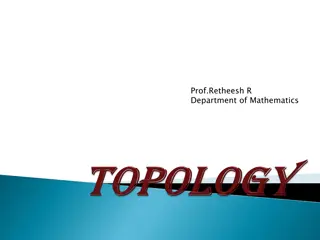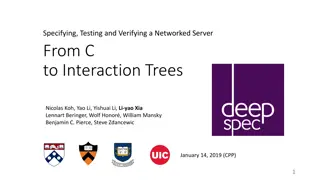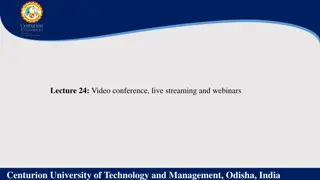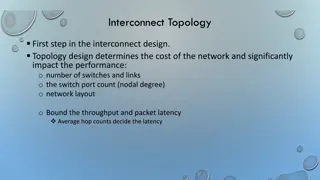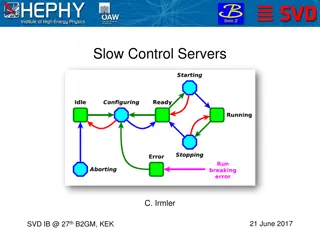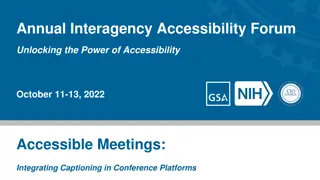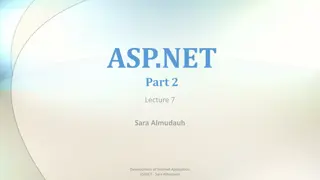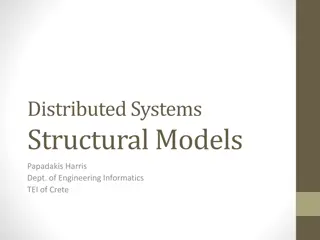Optimizing Multi-Party Video Conferencing through Server Selection and Topology Control
This paper proposes innovative methods for multi-server placement and topology control in multi-party video conferences. It introduces a three-step procedure to minimize end-to-end delays between client pairs using D-Grouping and convex optimization. The study demonstrates how combining D-Grouping, Global Convex Optimization, and Global Server Search achieves the lowest delay in simulations.
Download Presentation

Please find below an Image/Link to download the presentation.
The content on the website is provided AS IS for your information and personal use only. It may not be sold, licensed, or shared on other websites without obtaining consent from the author.If you encounter any issues during the download, it is possible that the publisher has removed the file from their server.
You are allowed to download the files provided on this website for personal or commercial use, subject to the condition that they are used lawfully. All files are the property of their respective owners.
The content on the website is provided AS IS for your information and personal use only. It may not be sold, licensed, or shared on other websites without obtaining consent from the author.
E N D
Presentation Transcript
Server Selection and Topology Control for Multi-Party Video Conference Shuopeng Zhang, Di Niu, Yaochen Hu, Fangming Liu University of Waterloo, Canada University of Alberta, Canada Huazhong University of Science and Technology, China
Outline Introduction Multi-server topology Algorithms D-Grouping based on PINGs Server location optimization Simulations Implementation Conclustion
proposal This paper proposes new methods for multi- server placement and topology control in multi-party video conferences.
Introduction Existing multi-party conferencing solutions P2P Centralized servers Utilization Large cloud of proprietary Third-party CDN nodes and datacenters Lightweight practical solutions Based on only the RTTs between the few clients and some geo-information.
Algorithms A three-steps procedure to minimize the mean end-to-end delay between all pairs of clients. Use D-Grouping to cluster the clients. Convex optimization to find the ideal server location that minimize the total length of all client- to-client paths. Map the server to closest server candidate that really achieves the minimum mean end-to-end delay.
D-Grouping based on PINGs Similar to k-means, however, it depends on not clients coordinates but the pairwise round-trip times(RTTs). Two steps Initial grouping Iterative grouping
Server location optimization Geo-Center Local Convex Optimization Global Convex Optimization Na ve Server Search(NaiSS) Local Server Search(LclSS) Global Server Search(GlbSS)
Simulation Best performance combination The method of using D-Grouping + Global Convex Optimization + Global Server Search is the best method that incurs the lowest delay.
Implementation Measuring end-to-end packet delays Tcircle RTTAB/2 Real-world experiments 6 nodes as clients Best method
Conclusion The placement of multi-servers and topology control in multi-party video conferencing applications.






